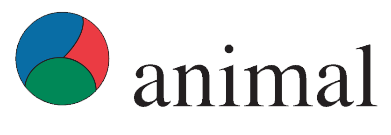Document type : Scientific article published in Sensors
Authors: Charles Carslake, Jorge A. Vázquez-Diosdado, Jasmeet Kaler
Preview: Previous research has shown that sensors monitoring lying behaviours and feeding can detect early signs of ill health in calves. There is evidence to suggest that monitoring change in a single behaviour might not be enough for disease prediction. In calves, multiple behaviours such as locomotor play, self-grooming, feeding and activity whilst lying are likely to be informative. However, these behaviours can occur rarely in the real world, which means simply counting behaviours based on the prediction of a classifier can lead to overestimation. Here, we equipped thirteen pre-weaned dairy calves with collar-mounted sensors and monitored their behaviour with video cameras. Behavioural observations were recorded and merged with sensor signals. Features were calculated for 1-10-s windows and an AdaBoost ensemble learning algorithm implemented to classify behaviours. Finally, we developed an adjusted count quantification algorithm to predict the prevalence of locomotor play behaviour on a test dataset with low true prevalence (0.27%). Our algorithm identified locomotor play (99.73% accuracy), self-grooming (98.18% accuracy), ruminating (94.47% accuracy), non-nutritive suckling (94.96% accuracy), nutritive suckling (96.44% accuracy), active lying (90.38% accuracy) and non-active lying (90.38% accuracy). Our results detail recommended sampling frequencies, feature selection and window size. The quantification estimates of locomotor play behaviour were highly correlated with the true prevalence (0.97; p < 0.001) with a total overestimation of 18.97%. This study is the first to implement machine learning approaches for multi-class behaviour identification as well as behaviour quantification in calves. This has potential to contribute towards new insights to evaluate the health and welfare in calves by use of wearable sensors.




